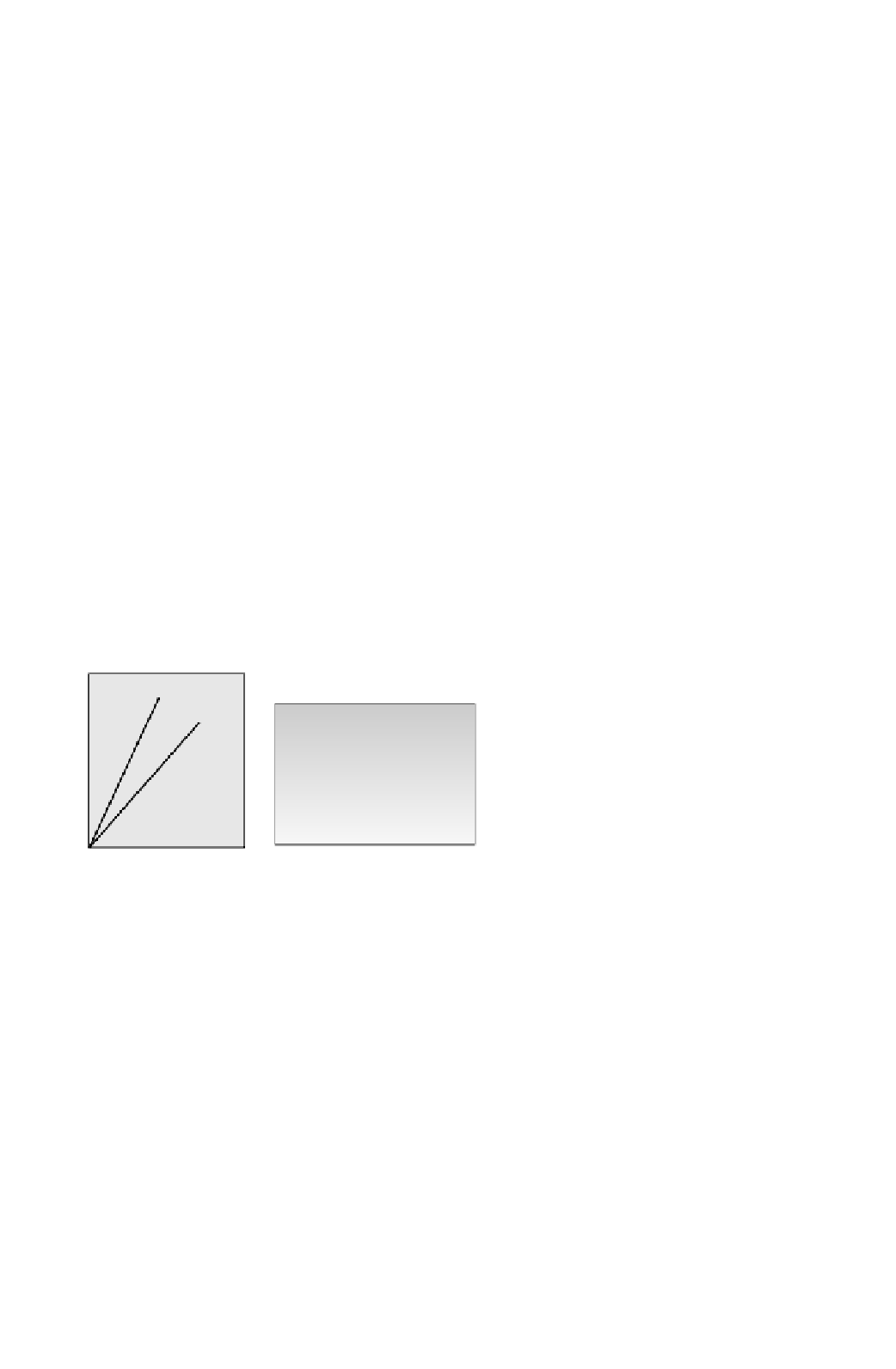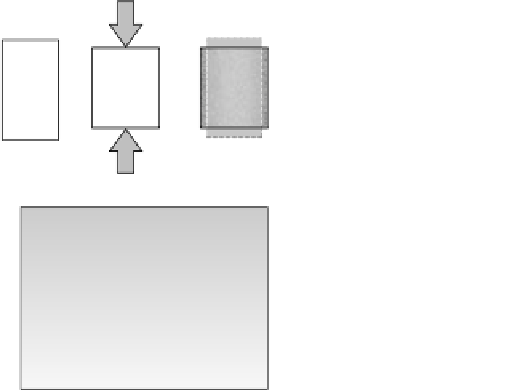Geoscience Reference
In-Depth Information
added to the spring in one of the extremes (as a
dynamometer) or it is pulled by one of the edges, it will
stretch by the action of the applied force. The bigger the
load, or the more the spring is pulled on the extremes, the
longer it becomes by stretching. When the spring is
released or liberated from the load in one of the extremes
the spring returns to the original length.
Elasticity in rocks is defined by several parameters; the
most commonly used being
Young's modulus
(
E
) and
the
Poisson coefficient
(
value for the Young's modulus means that the level of strain
produced is small for the amount of stress applied, whereas
low values indicate higher deformation levels for a certain
amount of stress. Rigid solids produce high Young's modu-
lus values as they are very reluctant to change shape or vol-
ume. Rigid materials experience
brittle
deformation when
their mechanical resistance is exceeded by the applied stress
level at the elastic boundary.
When applying uniaxial compressional tests to rock
samples, vertical shortening may be accompanied by some
horizontal expansion. The Poisson coefficient (
). Young's modulus is a measure of
the resistance to elastic deformation which is reflected in the
linear relation between the stress (
) shows
the relation between the lateral dilation or barreling of a
rock sample and the longitudinal shortening produced by
loading: thus
) and the strain (
):
E
(Fig. 3.93a). This linear relation, which was observed
initially by Hooke in the mid-seventeenth century by apply-
ing tensile stresses to a rod and measuring the extension, is
commonly known as Hooke's Law. Considering that all
parameters used to measure strain (stretch, extension, or
quadratic elongation) are dimensionless, the Young's modu-
lus is measured in stress units (N m
2
, MPa) and has negative
values of the order of
/
longitudinal
and it can be seen that
Poisson's coefficient is dimensionless (Fig. 3.93b). When
stresses are applied, if there is no volume loss, the sample
has to thicken sideways to account for the vertical shorten-
ing. Typically, the sample should develop a barrel form
(nonhomogeneous deformation) or increase its surface
area as it expands laterally. For perfect, incompressible,
isotropic, and homogeneous materials which compensate
the shortening by lateral dilation without volume loss, the
Poisson's coefficient is 0.5; although values for natural
materials are generally smaller (Fig. 3.93b). In very rigid
rock bodies, the lateral expansion may be very limited
or not occur at all; in this case there is a volume loss and
lateral
/
10
5
. The reason why the
values are negative is because the applied stress is extensional
and hence has a negative value, and the strain produced is a
lengthening, which is conventionally considered positive.
Not all rocks follow Hooke's Law; some deviations occur
but they are small enough so a characteristic value of
E
can
be defined for most rock types (Fig. 3.93a). A high absolute
10
4
or
(a)
(b)
Uniaxial
compression
a
Final state
Original
Rock type
E
(10
4
MPa)
ec
c
b
Marble
Limestone
Granite
Shale
Quartzite
Diorite
-4.8
-5.3
-5.6
-6.8
-7.9
-8.4
e
d
d
E
a
>
E
b
n
=
e
d/
e
c
e
(%)
E
=
s
/
e
(Hooke's Law)
Rock type
n
Schist, biotite
Shale, calcareous
Diorite
Granite
Aplite
Siltstone
Dolerite
0.01
0.02
0.05
0.11
0.20
0.25
0.28
Fig. 3.93
Elastic parameters. (a) The Young's modulus describes the slope of the stress/strain straight line, being a measure of the rock
resistance to elastic deformation. Line
a
has a higher value of Young's modulus (
E
a
) being more rigid than line
b
(Young modulus
E
b
)
(i.e. it is less strained for the same stress values); (b) Poisson's coefficient relates the proportion in which the rock deforms laterally when it is
compressed vertically. Comparing the original and final lengths before and after deformation strain
can be calculated and the Poisson's ratio
established.





















Search WWH ::

Custom Search